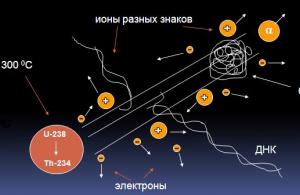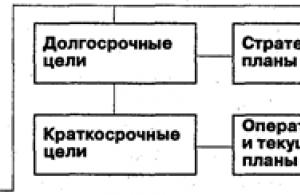Vehicles are devices used to transport goods or equipment installed on it or people by road. This definition gives a completely comprehensive picture of the vehicle. However, in practice this is often not enough. Traffic regulations contain more complete information about the vehicle.
General information
Conventionally, there are rail and trackless vehicles. There is also a division into non-self-propelled and self-propelled. The movement of vehicles in the latter case is ensured by the operation of the motor. The traffic rules, however, have a different classification. In accordance with the rules, mechanical and non-mechanical types of vehicles are distinguished. These categories have fundamental differences.
Mechanical vehicles
Their main feature is the presence of an engine. Mechanical vehicles (vehicles) are trucks, cars, and motorcycles. These also include self-propelled machines and tractors. The engine can be anything: hydrogen, gasoline, gas, diesel, etc. Another criterion for such vehicles is their purpose. They should only be used on the road.
Non-mechanical vehicles
These primarily include bicycles. They are vehicles, with the exception of wheelchairs, that have at least 2 wheels and are driven by the muscular energy of citizens and control them. Pedals or handles can be used for this. Motors can be installed on bicycles. Their maximum does not exceed 0.25 kW. At the same time, they automatically turn off at speeds above 25 km/h. All of these parameters allow us to classify bicycles as non-mechanical vehicles.

Special category
Mopeds are mechanical means (transport). This is due to the presence of an internal combustion engine or an electric motor. Meanwhile, mopeds are included in the category of non-motorized vehicles. This is explained by the fact that their maximum design speed does not exceed 50 km/h, and the working volume of the motor is 50 m 3 (or the rated power with a continuous load of more than 0.25 and less than 4 kW). Other vehicles are defined in a similar way. These are primarily scooters, motorcycles and other similar vehicles with engines.
Important point
Driving a vehicle classified as non-motorized does not require a driver's license. The vehicles themselves do not undergo registration; signs (numbers) are not provided for them. Meanwhile, we should not forget that the persons who own them are drivers. In this regard, driving a non-mechanical vehicle must be carried out in accordance with traffic rules.

Maximum permissible weight
It characterizes the weight of the vehicle with cargo, passengers and driver. The permitted weight is set by the manufacturer and is considered the maximum permissible. Let's understand the terminology. The maximum permissible weight of a vehicle with passengers, cargo and driver is considered to be the maximum. Exceeding the established indicator is prohibited. This is due to the fact that under high loads (greater than those provided by the manufacturer), the car body, brake system, engine, suspension, steering part will not be able to function normally. Accordingly, there is a risk of creating an emergency situation. The maximum permitted weight is to a certain extent a theoretical indicator, which is prescribed in the vehicle title and registration certificate. Often many people confuse it with the actual weight of the vehicle. The key difference between these parameters is that the permitted mass is set once and for all. However, the actual weight may constantly change. However, in any case, its size should not exceed the permitted mass.
Weight as a criterion of differentiation
Vehicles are classified according to their permitted weight. Trucks are divided into 2 categories according to this indicator. The first includes vehicles with a permissible weight of no more than 3.5 tons, the second - more than 3.5 tons. This figure acts as a kind of indicator of the size of cars. In this regard, trucks whose permissible weight is less than 3.5 tons are included in the category that also includes passenger cars.

Permitted weight of coupled vehicles
The totality of their weight parameters is taken as the maximum permissible weight of vehicles moving as a whole. To understand this situation, it is advisable to refer to the concepts of “trailer” and “road train”. The first is a vehicle that is not equipped with a motor and is used to move in conjunction with a mechanical vehicle. A road train refers to devices that are coupled to a trailer. Accordingly, if there are several vehicles in the composition, including those without engines, the total permissible weight will correspond to the sum of their permissible weight provided by the manufacturers.
Route vehicle
It is a technical vehicle intended for public use. This category includes buses, trams, and trolleybuses. Their main function is to transport people along a set route with stops at designated places. Such vehicles are determined by the following criteria:

Specifics
It should be noted that one of the key criteria for route vehicles is the availability of a working schedule. Why is this feature particularly highlighted in the definition? The fact is that while the vehicle is not on the route, it will not be considered public transport. For example, a passenger GAZELLE driving to a garage or parking place after a shift is an ordinary vehicle. There are certain concessions and privileges for public transport. For example, the driver of a route vehicle can ignore the effect of a number of prohibitions or special lanes are provided for this. They are distinguished by special markings and signs.
Vehicle purchase and sale agreement
Many vehicle owners need to sell their car. At the same time, a contract for the sale of the vehicle is drawn up. Here are some recommendations for how to compile it correctly. The document can be filled out by hand or on a computer. Particular attention should be paid to key terms. The contract must contain a number. For example, 01/2016. Subsequently, this number will be indicated in the PTS. The document contains the place and date of the transaction. The passport details of the seller and the buyer must be indicated. Information about the car must also be present in the document. They are copied from the certificate and PTS. The price of the car is set by the parties to the transaction themselves. The amount is written in numbers and words. Immediately before signing, the owner hands over the keys and documents, and the buyer hands over the money. In addition to the contract, a vehicle acceptance certificate is also drawn up.

Applications
The seller must provide:
- Original PTS.
- Car registration certificate.
- Passport of a citizen of the Russian Federation.
The buyer presents:
- A document that verifies his identity.
- OSAGO policy.
First of all, you should make sure that the vehicle:
- Does not serve as collateral.
- Not a credit card.
- Has no penalties.
- There are no restrictions on registration actions.
- Not arrested.
Additionally
After signing the contract, the new owner is indicated in the PTS. Within ten days from the date of the transaction, the buyer must register the car. At the end of the established period, the former owner can check the fact. In this situation, the former owner will need a signed agreement. The citizen does not have a vehicle, but it is registered with him - what to do in this case? The former owner has the right to terminate registration by submitting a corresponding agreement to the traffic police. If the policy has not expired on the date of the transaction, the citizen has the right to return the money under it. It should be taken into account that the calculation of unused days begins on the calendar date following the day of termination of the insurance agreement.

Vehicle rental
It is regulated by the provisions of the Civil Code. The Code provides for two types of charter: with and without crew. Their definitions are given in Art. 632 and 642. The subject of the agreement is exclusively vehicles intended for the transportation of baggage, passengers and cargo. Renting a vehicle with crew involves two obligations. One is directly related to the provision of a vehicle for use. The second concerns the provision of services by the crew. The differences in regulatory regulation of these types of transactions are as follows. Responsibilities for operating a vehicle provided without a crew are assigned to the lessor. In the second case, they are performed by the tenant. The payment made by the user is called freight. The crew of a leased vehicle is subordinate to both the lessee and the lessor. Liability for damage to third parties is distributed depending on a number of circumstances. So, if the vehicle is provided without a crew, it is borne by the lessee. He may be released from liability if he proves that the damage was a consequence of the actions of the victim or When renting a car with a crew, the lessor is responsible for the damage.
Conclusion
Currently, there are a huge number of vehicles of various types. Meanwhile, regardless of the vehicle category, drivers are required to comply with traffic rules. The rules establish requirements relating not only to direct movement on the roads, but also to the registration and operation of vehicles. Drivers need to remember that a vehicle acts not only as a means of transportation, but also as a source of danger. In this regard, the condition of the object must be given special attention. To prevent emergency situations, it is recommended to carry out timely diagnostics of the machine. When making transactions, you should carefully study the documents provided by the seller. The buyer, in turn, needs to register the vehicle in a timely manner.
The range of services of the motor transport company TransLines LLC includes specialized freight transportation, which requires specialized motor transport, special working conditions and is associated with certain risks.
What we transport
The following cargoes require special transportation conditions:
- heavy, large and oversized - weighing more than 500 kg, exceeding standard road dimensions;
- perishable - food products with a certain shelf life and other products whose quality may deteriorate during delivery;
- hazardous - substances that pose a danger to people or material assets;
- valuable - objects of art and museum exhibits.
We provide special cargo transportation in Perm, Moscow and throughout Russia. The type of cargo and its volume is one of the components of the cost of the service.
Cost of transportation of special cargo
| Vehicle type | Weight, tons | Volume, m3 | Cost in rubles/per 1 hour | Cost in rubles/per 1 km. | Minimum number of hours when ordering |
| Gazelle | 1,5 | 15 | 350 | 12 | 2 |
| Goby | 3 | 16-20 | 750 | 18 | 4 |
| Bull, thermos, refrigerator | 3 | 16 | 800 | 19 | 4 |
| Awning, onboard, isotherm, refrigerator | 5 | 22-34 | 850 | 20 | 4 |
| 10 | 34-45 | 1000 | 29 | 4 | |
| "All-terrain vehicle" | 10 | - | 1500 | 38 | 8 |
| 20 | - | 1900 | 45 | 8 | |
| Awning, side | 20 | 82-92 | 1200 | 39 | 4 |
| Thermos, refrigerator | 20 | 82-92 | 1400 | 42 | 4 |
| Trawl | - | - | 2500 | 75 | 8 |
Our road transport
Having our own fleet of vehicles allows us to provide appropriate conditions for transportation. You can order vehicles from us:
- flatbed tilt semi-trailer with a carrying capacity of up to 20 tons;
- cargo van (manufactured goods, refrigerator);
- tank semi-trailer for hazardous substances;
- low-loader platform up to 12 meters long, with a lifting capacity of up to 60 tons.
In addition to these vehicles, there are several other types of special-purpose cargo transport.
All vehicles are kept in excellent condition and are ready to leave upon request. It is served by drivers who have extensive experience in delivering dangerous, oversized and valuable cargo, who are familiar with the Moscow-Perm-Moscow route and other cities. The price for specialized cargo transportation depends on the type of vehicle and the distance.
How we are working
Features of work
The motor transport company TransLines LLC has been working in the field of cargo transportation for more than 10 years. Our specialists are well acquainted with what they do and with the roads of Moscow, Perm and throughout Russia. Transportation of goods by specialized vehicles is carried out in compliance with certain rules, for which:
- selection of equipment is carried out in accordance with the specifics of the cargo;
- the optimal route for prompt and safe delivery is developed;
- Safety precautions are strictly observed when performing loading and unloading operations and while the vehicle is moving.
When loading vehicles, our specialists strictly monitor the packaging and securing of items in the back, the specified temperature and do not allow delays along the way. To carefully transport museum exhibits and fragile valuables, they use a car upholstered on the inside with soft material. We offer additional insurance services and provide storage space for rent.
Remember the very beginning of “The Golden Calf” by Ilf and Petrov? “You have to love pedestrians. Pedestrians make up the majority of humanity. Moreover, the best part of it.”
As an experienced driver, I beg to differ with this – clearly outdated – statement. The overwhelming number of pedestrians simply do not know about the Rules of the Road. Moreover, they don’t even want to know about them.
Or they naively believe that traffic rules are written not for them, but for drivers. As a last resort, for passengers. This is a fundamentally wrong position and a very dangerous delusion.
Although, in fairness, it is worth agreeing that the lion’s share of the Rules concerns the movement of transport. Let's talk about it in more detail.
VEHICLE
“Vehicle” is a device designed to transport people, goods or equipment installed on it on roads.
A very simple and comprehensive definition. Anything that is invented by man to facilitate movement and transportation and at the same time is capable of moving on roads is a vehicle. And there are a huge number of types of vehicles.
So, they can be railed (moving on rails) and trackless.
Or self-propelled (equipped with an engine) and non-self-propelled.
However, the Traffic Rules operate with other concepts when qualifying types of vehicles:
- Motor vehicles;
- Vehicles other than motor vehicles.
This is the most common classification.
POWER VEHICLE
“Motor driven vehicle” is a vehicle driven by an engine. The term also applies to any tractors and self-propelled machines.
By definition, the main characteristic of a motor vehicle is the presence of an engine. What engine? Yes, any: gasoline, diesel, gas, electric, hydrogen or nuclear (the latter - God forbid, of course!).
True, there is another hidden criterion here: the vehicle must be designed for road use. This seems to go without saying...
Consequently, the list of motor vehicles is incredibly large. These are motorcycles, cars and trucks, tractors and other self-propelled vehicles, etc.
In this regard, it becomes clear why a bicycle is not a motor vehicle. After all, it is not equipped with an engine.
“Bicycle” is a vehicle, other than a wheelchair, which has at least two wheels and is generally propelled by the muscular energy of the occupants of the vehicle, in particular by means of pedals or handles, and may also have an electric motor of rated maximum power in continuous load mode not exceeding 0.25 kW, automatically switches off at speeds over 25 km/h.
Ask why? It's simple.
- The maximum speed allowed by the manufacturer does not exceed 50 km/h.
In other words, we have two criteria for classifying a vehicle with an engine as NON-MECHANICAL. And in this same group, the Rules also include mokicks, scooters, “gazulkas” (bicycles with a suspended engine) and similar vehicles, seemingly equipped with an engine.
What does this mean? Driving these vehicles does not yet (that is, YET!) require a driver’s license. But the vehicle itself does not go through the registration procedure and issuance of state registration plates (numbers).
However, persons driving such vehicles are drivers, and, therefore, are obliged to strictly observe the Rules of the Road.
Now let’s return to the concept of “Vehicle” and note a number of fundamental points.
A special characteristic of any vehicle is its PERMITTED MAXIMUM WEIGHT.
“Permitted maximum weight” is the weight of the equipped vehicle with cargo, driver and passengers, established by the manufacturer as the maximum permissible. The permissible maximum mass of a vehicle composition, that is, coupled and moving as one unit, is taken to be the sum of the permissible maximum masses of the vehicles included in the composition.
Let us comment on the first part of the concept. It is important to understand these two terms related to vehicle weight: 1) permitted; 2) maximum.
“Maximum” weight is the maximum permissible weight of a vehicle - with driver, passengers and cargo. Exceeding this mass is unacceptable. Why? Yes, because the car body itself, its suspension, engine, brake system and steering do not guarantee their normal functioning when the permissible weight is exceeded.
For example, the braking system will be ineffective because... Exceeding the mass of the vehicle means greater inertia during movement and greater centrifugal force.
So, “maximum” weight means the maximum permissible weight of the vehicle.
Who sets this limit? Of course, the manufacturer. And this is an explanation of the term “allowed” mass. It is the manufacturer who determines – allows – this maximum mass.
And further. The permissible maximum weight is a certain “theoretical” weight specified in the vehicle passport (PTS) and registration certificate.
This mass should not be confused with the actual (“current”), that is, the one that the vehicle currently possesses (now). And if the actual weight of a car is an extremely dynamic phenomenon, constantly changing, then the permissible maximum weight is a mark for life.
Another important point. The permissible maximum weight is also a criterion for distinguishing categories of vehicles. The fact is that trucks differ in this indicator into 2 types:
- Trucks with a permissible maximum weight of no more than 3.5 tons (category B) - for example, a GAZelle truck;
- Trucks with a permissible maximum weight of more than 3.5 tons (category C) - for example, KamAZ.
The figure of 3.5 tons is a kind of indicator of the size of the truck. That is why trucks with a permissible maximum weight not exceeding 3.5 tons belong to a category that also includes passenger cars.
Now let's remember the second part of the concept “Permitted maximum weight”.
“The permissible maximum mass of a combination of vehicles, that is, coupled and moving as one unit, is taken to be the sum of the permissible maximum masses of the vehicles included in the composition.”
To understand this situation, let us turn to two more concepts - road train and trailer.
“Road train” is a mechanical vehicle coupled to a trailer (trailers).
“Trailer” is a vehicle that is not equipped with an engine and is intended to be driven in conjunction with a power-driven vehicle. The term also applies to semi-trailers and trailers.
It happens that a motor vehicle travels with a trailer (which, by the way, also requires registration). And in this case, the permissible maximum mass will be calculated as the sum of the permissible maximum masses, on the one hand, of the motor vehicle itself and, on the other hand, of the trailer.
Let's summarize. Permitted maximum weight is the maximum permissible weight of a vehicle (with driver, passengers and cargo), which is set by the manufacturer as the maximum for a given vehicle.
And the last term that should be considered in this block of concepts.
ROUTE VEHICLE
“Route vehicle” is a public vehicle (bus, trolleybus, tram) intended for transporting people on roads and moving along a set route with designated stopping places.
This vehicle belongs to a special category. Its criteria are:
- Belonging to the infrastructure for transporting people (passengers);
- Driving along a designated (approved) route;
- Carrying out stops at designated places (as well as stops upon request.
In other words, a route vehicle is the same public transport that moves along the roads and transports people all day (and sometimes at night).
It is important to note that a route vehicle is only a route vehicle when it is on a route (in operating mode). For example, a passenger GAZelle heading to a garage or parking place after a hard day is no longer considered a route vehicle.
But the same “Gazelle” that moves out in the morning to the passenger pick-up point is not yet one.
Why are we talking about this in such detail? The fact is that the driver of a route vehicle has the right to ignore the actions of some road signs - prohibitory signs, mandatory signs, signs of special instructions.
Moreover, a specially allocated lane is designated for route vehicles, indicated by appropriate signs and markings.
Finally, the text of the Rules provides for other concessions and privileges that apply to route vehicles. We talked about this in the “” and “” sections.
An ordinary driver must remember these circumstances and not blindly copy the actions of his colleague from a route vehicle. Otherwise, he may grossly violate the Rules.
Let's complete the fourth block of concepts. We made sure that the vehicles are presented in their diversity and splendor. However, if you dream of becoming a real driver, then a mechanical vehicle is your choice
If this information was useful to you, please write about it in the comments. If you have any questions, write, we will definitely try to help you.
- vehicle
- the vehicle is
- vehicles
- what is a vehicle
Discussion: 10 comments
Vladimir: Article 12.1 of the Code of Administrative Offenses of the Russian Federation, in general, LEARN not only traffic rules but also open the Code of Administrative Offenses! You are right, everything needs to be studied, but the laws should be uniform both in the traffic rules and in the Code of Administrative Offences, i.e. for example, if you call a donkey a vehicle, then you cannot call a bicycle and a tank a vehicle in the traffic rules, and in the Code of Administrative Offenses it should be explained that a different fine must be applied to the one that purrs and the one who moos.
Good afternoon.
Thanks for the article - quite informative. Unfortunately, a misunderstanding has arisen (I’ll make a reservation right away: I don’t have rights at the moment, so the question may be one of the “stupid” ones, but I consider it appropriate to ask it, since, I believe, not only me may have such a question..).
There is a moment in the article in which the author explains why a moped is not a mechanical vehicle... the arguments are given, but they all collapse when reading the definition itself (“Moped” is a two- or three-wheeled MECHANICAL vehicle..) Stupor: it is mechanical definition, but is not mechanical in essence?? (or did I miss some clever trick?)
Ask why? It's simple.
“Moped” is a two- or three-wheeled mechanical vehicle, the maximum design speed of which does not exceed 50 km/h, having an internal combustion engine with a displacement not exceeding 50 cubic meters. cm, or an electric motor with a rated maximum power in continuous load mode of more than 0.25 kW and less than 4 kW.
If we choose a rational grain from all this verbal husk, then two criteria will be fundamental in defining a moped:
An engine with a displacement not exceeding 50 cubic centimeters;
The maximum speed allowed by the manufacturer does not exceed 50 km/h. Doesn't it seem like the information is outdated?
of course everything is wonderful, but just not a word about walk-behind tractors, how are they? whether they are T.S. or not, they have a design speed of less than 50 km, h, but the volume is more than 50 km, h
Article 12.1 of the Code of Administrative Offenses of the Russian Federation
Note. In this article, a vehicle should be understood as a motor vehicle with an internal combustion engine displacement of more than 50 cubic centimeters or a maximum electric motor power of more than 4 kilowatts and a maximum design speed of more than 50 kilometers per hour......
in general, LEARN not only traffic rules but also open the Code of Administrative Offenses!
– this is the distribution of various cars into groups, classes and categories. Depending on the type of design, parameters of the power unit, purpose or features that certain vehicles have, the classification provides for several such categories.
Classification by purpose
Vehicles vary in their purpose. Passenger and trucks, as well as special-purpose vehicles can be distinguished.
If everything is very clear with passenger and cargo cars, then special vehicles are not intended for transporting people and goods. Such vehicles transport equipment that is attached to them. Thus, such means include fire trucks, aerial platforms, truck cranes, mobile benches and other vehicles equipped with one or another equipment.
If a passenger car can accommodate up to 8 people without a driver, then it is classified as a passenger car. If the vehicle capacity is more than 8 people, then this type of vehicle is a bus.
The transporter can be used for general purpose or for transporting special cargo. General purpose vehicles have a body with sides without a tipping device. They can also be equipped with an awning and arches for installation.
Special-purpose trucks have various technical capabilities in their design for transporting certain goods. For example, the panel carrier is optimized for convenient transportation of panels and building slabs. The dump truck is used for mainly bulk cargo. The fuel tanker is designed for light petroleum products.
Trailers, semi-trailers, spreader trailers
Any vehicle can be used with additional equipment. These can be trailers, semi-trailers or dissolutions.
A trailer is one of the types of vehicles used without a driver. Its movement is carried out by means of a car using towing.
A semi-trailer is a towed vehicle without driver participation. Part of its mass is given to the towing vehicle.

The spreader trailer is designed for transporting long loads. The design includes a drawbar, the length of which may change during operation.
The vehicle doing the towing is called a tractor. This car is equipped with a special device that allows you to couple the car and any trailer. In another way, this design is called a saddle, and the tractor is called a truck tractor. However, a tractor-trailer is in a separate category of vehicles.
Indexing and types
Previously, in the USSR, each vehicle model had its own index. It designated the plant where the car was produced.
In 1966, the so-called industry standard OH 025270-66 “Classification and designation system for automotive rolling stock, as well as its units and components” was adopted. This document not only made it possible to classify types of vehicles. Based on this provision, trailers and other equipment were also classified.
According to this system, all vehicles whose classification was described in this document had four, five or six digits in their index. Using them, it was possible to determine vehicle categories.
Decoding digital indices
By the second digit one could find out the type of vehicle. 1 – passenger vehicle, 2 – bus, 3 – general purpose truck, 4 – truck tractor, 5 – dump truck, 6 – tank, 7 – van, 9 – special purpose vehicle. 
As for the first digit, it indicated the vehicle class. For example, passenger vehicles, classified by engine size. Trucks are divided into classes based on weight. Buses were differentiated by length.
Classification of passenger vehicles
According to the industry standard, passenger wheeled vehicles were classified as follows.
- 1 – especially small class, engine volume was up to 1.2 liters;
- 2 – small class, volume from 1.3 to 1.8 l;
- 3 – middle class cars, engine capacity from 1.9 to 3.5 liters;
- 4 – large class with a volume above 3.5 l;
- 5 – the highest class of passenger vehicles.
Today, the industry standard is no longer mandatory, and many factories do not adhere to it. However, domestic auto manufacturers still use this indexation.
Sometimes you can find vehicles whose classification does not fit the first digit in the model. This means that the index was assigned to the model at the development stage, and then something changed in the design, but the number remained.
Foreign cars and their classification system
The indices of foreign cars that were imported into our country were not included in the list of vehicles according to the accepted norm. Therefore, the Certification System for Motor Vehicles was introduced in 1992, and its modified version has been in effect since October 1, 1998. 
For all types of vehicles that came into circulation in our country, it was necessary to draw up a special document called “Vehicle Type Approval.” It followed from the document that each vehicle must have its own separate brand.
To simplify the certification procedure in the Russian Federation, they use the so-called International Classification System. In accordance with it, any road vehicle can be classified into one of the groups - L, M, N, O. There are no other designations.
Categories of vehicles according to the international system
Group L includes any vehicles with fewer than four wheels, as well as ATVs:
- L1 is a moped or vehicle with two wheels that can reach a maximum speed of 50 km/h. If the vehicle has an internal combustion engine, its volume should not exceed 50 cm³. If an electric motor is used as a power unit, then the power ratings must be less than 4 kW;
- L2 – three-wheeled moped, as well as any vehicle with three wheels, the speed of which does not exceed 50 km/h, and the engine capacity is 50 cm³;
- L3 is a motorcycle with a volume of more than 50 cm³. Its maximum speed is higher than 50 km/h;
- L4 – a motorcycle equipped with a sidecar for carrying a passenger;
- L5 – tricycles whose speed exceeds 50 km/h;
- The L6 is a lightweight quad bike. The weight of the equipped vehicle must not exceed 350 kg; Maximum speed no more than 50 km/h;
- L7 is a full-fledged quad bike with a weight of up to 400 kg.

- M1 is a vehicle for transporting passengers with no more than 8 seats;
- M2 – vehicle with more than eight seats for passengers;
- M3 – vehicle with more than 8 seats and weighing up to 5 tons;
- M4 is a vehicle with more than eight seats and a weight of over 5 tons.
- N1 – trucks weighing up to 3.5 tons;
- N2 – vehicles weighing from 3.5 to 12 tons;
- N3 – vehicle weighing more than 12 tons.
Classification of vehicles according to the European Convention
In 1968, Austria adopted the Convention on Road Traffic. The classification provided in this document is used to designate different categories of transport.
Types of vehicles under the Convention
It includes several categories:
- A – these are motorcycles and other two-wheeled motorized equipment;
- B – cars with a weight of up to 3500 kg and a number of seats of no more than eight;
- C – all vehicles, except those belonging to category D. Weight must be more than 3500 kg;
- D – passenger transport with more than 8 seats;
- E - freight transport, tractors.

Category E allows drivers to drive road trains that consist of a tractor. You can also include here any vehicles of classification B, C, D. These vehicles can operate as part of a road train. This category is assigned to drivers along with other categories, and it is added when registering the car in the vehicle certificate.
Unofficial European classification
In addition to the official classification, there is also an unofficial one, which is used quite widely. It is quite popular among vehicle owners. Here we can distinguish categories depending on the design of vehicles: A, B, C, D, E, F. This classification is mainly used in reviews by automotive journalists for comparison and evaluation.
Class A contains small vehicles of low cost. F – these are the most expensive, very powerful and prestigious car brands. In between are classes of other types of machines. There are no clear boundaries here. This is a wide variety of passenger cars.

With the development of the auto industry, new cars are constantly being produced, which subsequently occupy their niches. With new developments, the classification is constantly expanding. It often happens that different models can occupy the boundaries of several classes, thereby forming a new class.
A striking example of this phenomenon is a parquet SUV. It is designed for paved roads.
VIN codes
In essence, this is a unique vehicle number. This code encrypts all information about the origin, manufacturer and technical characteristics of a particular model. Numbers can be found on many integral components and assemblies of machines. They are mainly located on the body, chassis elements or special nameplates.
Those who developed and implemented these numbers have introduced the simplest and most reliable method, which greatly simplifies the process of classifying cars. This number allows you to at least slightly protect cars from theft.
The code itself is not a jumble of letters and numbers. Each sign carries certain information. The cipher set is not very large; each code has 17 characters. These are mainly letters of the Latin alphabet and numbers. This cipher provides a position for a special check number, which is calculated based on the code itself.
The process of calculating the control number is a fairly powerful means of protection against interrupted numbers. It is not difficult to destroy numbers. But making a number so that it falls under the control number is a separate and quite complex task.
In conclusion, I would like to add that all self-respecting automakers use general rules for calculating the check digit. However, manufacturers from Russia, Japan and Korea do not adhere to such protection methods. By the way, using this code it is easy to find original spare parts for a particular model.
So, we found out what types of vehicles there are and looked at their detailed classification.








